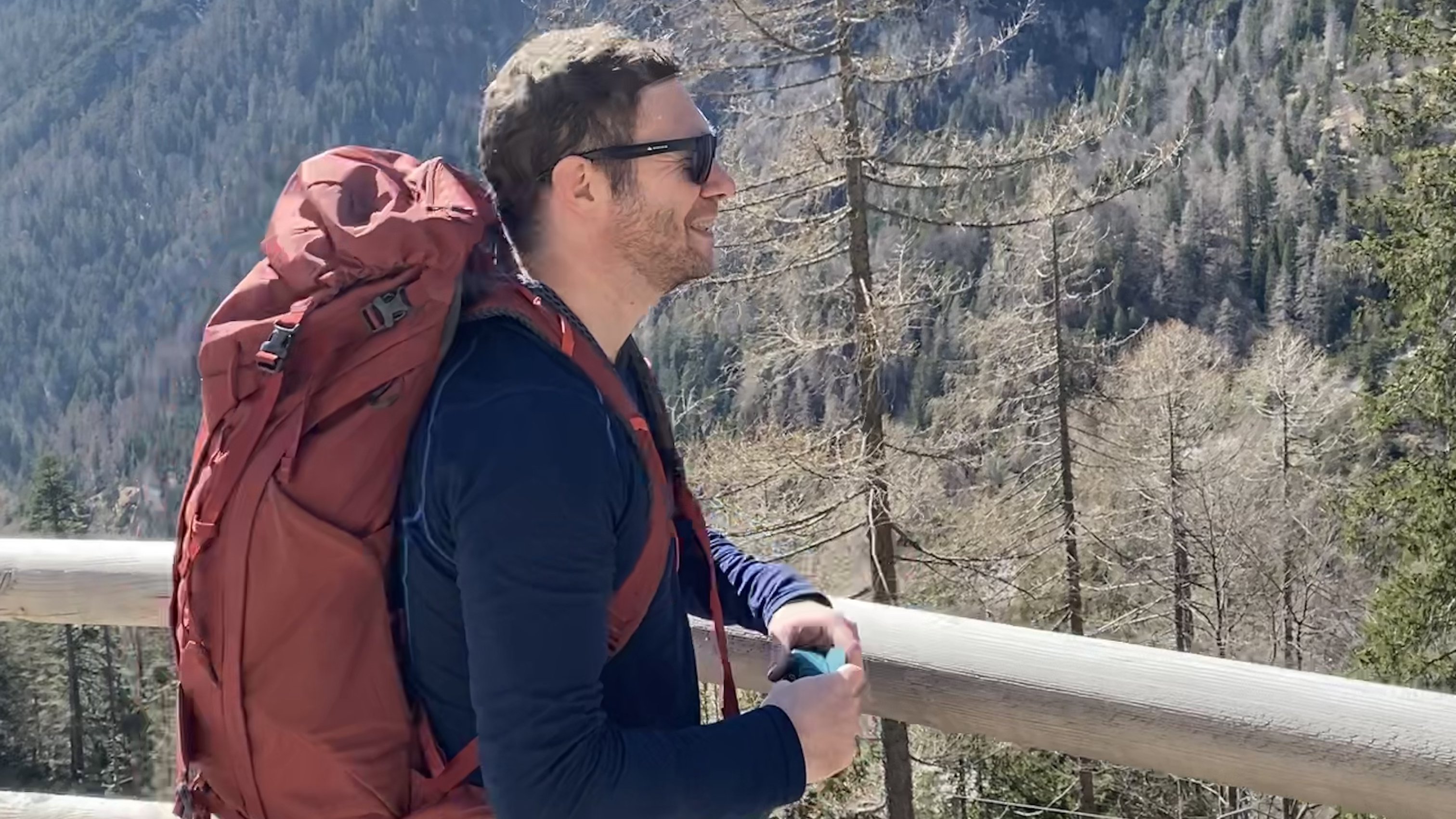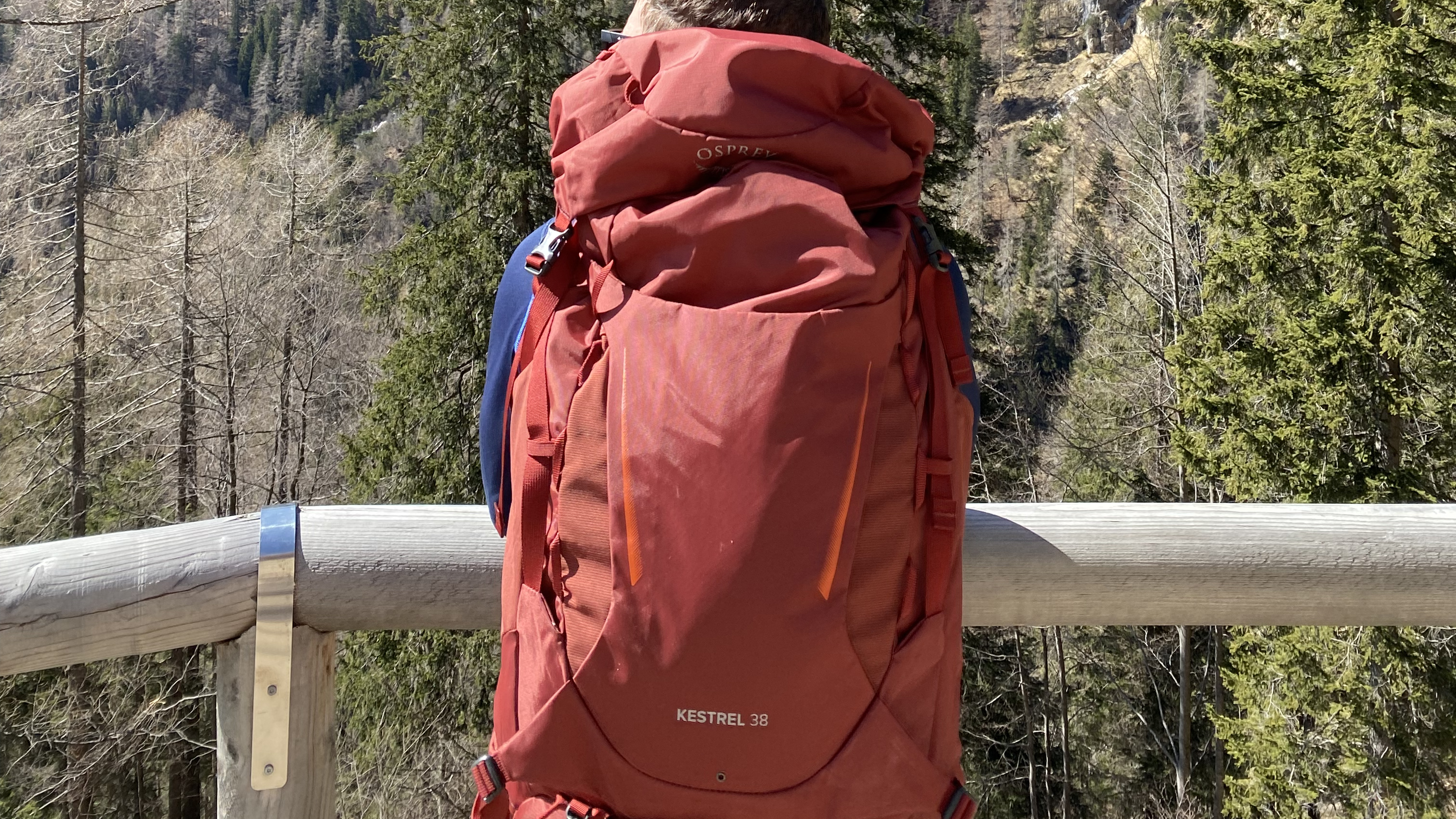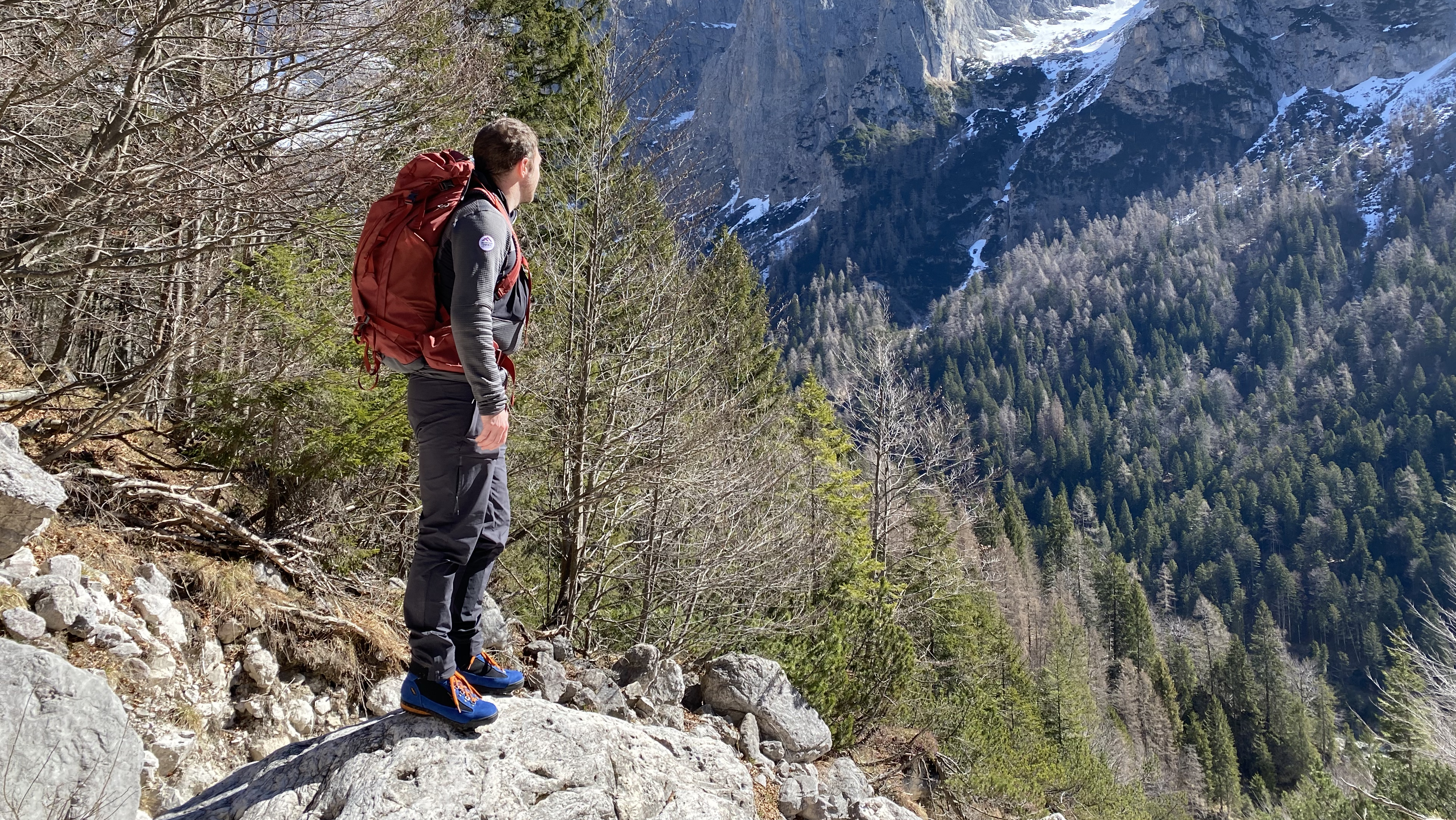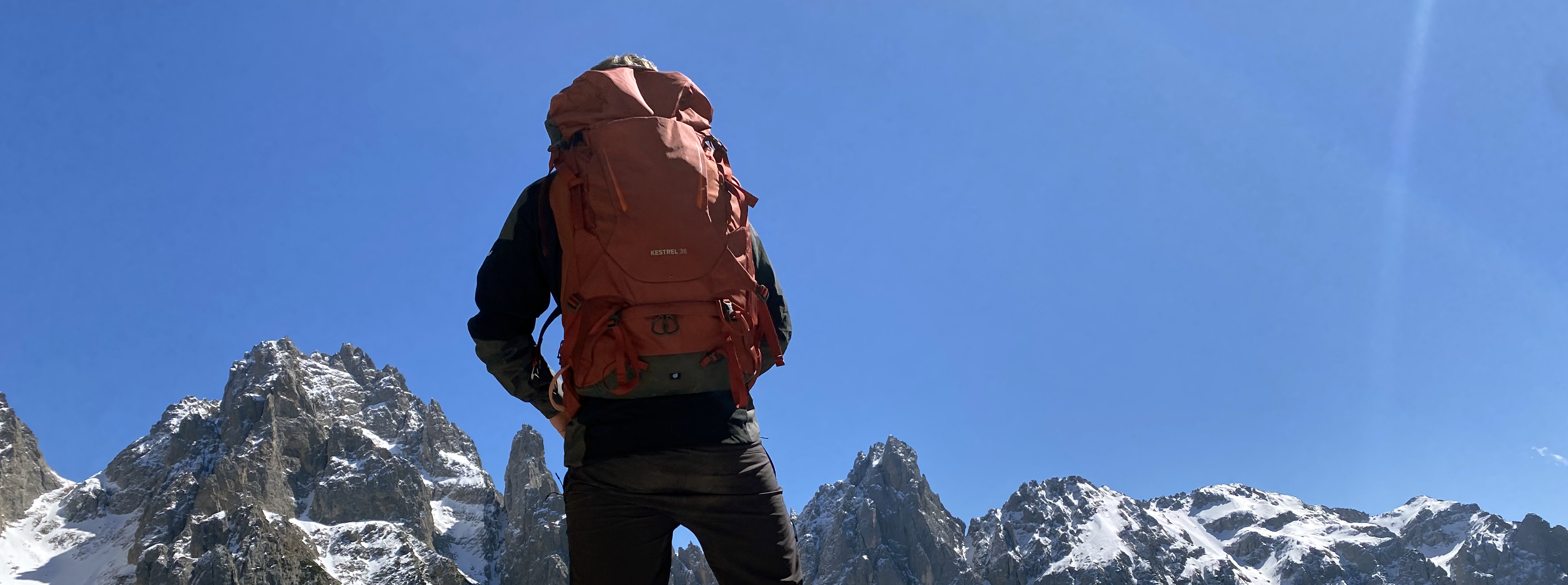Advnture Verdict
Versatility and durability are the key words when it comes to Osprey’s Kestrel packs. The 38 liter version is suited to day hiking, hut-to-hut trekking, scrambling, winter use, one-night expeditions and more, making it a solid investment for those who enjoy hiking in all its forms. Meanwhile, it’s sustainably sourced and hard-wearing materials make it a pack that’ll dance across the mountain ridges with you for many years.
Pros
- +
Rugged fabrics for durability
- +
Full feature set makes it a versatile pack
- +
Comfortable over long distances
- +
Great storage options
- +
Hydration reservoir compatible
- +
Attachments for poles and ice tools
Cons
- -
A little on the expensive size for its capacity
- -
Rain cover not to everyone’s tastes
- -
Heavier than comparable packs
- -
Not as customizable as some
You can trust Advnture
Osprey Kestrel 38: first impressions
It always makes me smile when a piece of outdoor kit is referred to as a ‘workhorse’. It isn’t as glamorous as being compared to a Ferrari, is it? Yet, in the backcountry, it’s the sturdy beasts that can cope with the weather and survive the harsh conditions, not the flashy ones. When it comes to carrying heavy loads in the wild, it’s better to be a yak or a workhorse than a cheetah.
Osprey describes its much-loved Kestrel and female-specific Kyte backpacks as ‘workhorses’, which should hint at their durability and rugged quality. The range is one of the American brand’s most popular and has been a key component in their journey to becoming the fastest growing pack brand in Europe in recent times.
List price: $200 (US) / £185 (UK)
Weight (empty): 1.9kg / 67oz
Volume: 38L (48L, 58L and 68L versions also available)
Size: 76cm x 34cm x 28cm / 30in x 13in x 11in
Variations available: Female-specific Kyte available in same capacities, with S/M and M/L options in the Kestrel and XS/S and S/M options in the Kyte
Back length: 76cm / 30in
Materials: Bluesign approved 100% recycled 420D nylon, DWR treatments made without PFAS
Colors: Black, Bonsai Green, Atlas Blue
Compatibility: All kinds of hiking, including scrambling and off-trail excursions, plus large enough for one-day expeditions
I’ve always liked the Kestrel series. My second serious backpack was an older version and it served me very well over numerous adventures. Eventually, I decided to put that particular horse out to pasture (or more accurately pass it on to a friend). This wasn’t because of any flaws with it as a hiking backpack but because I’d been getting more into mountaineering and wanted something more finely tuned to winter adventures.
Anyway, I jumped at the chance to see how the Kestrel had evolved from that last pack. Getting hold of the newest model really highlighted the progress Osprey continue to make in improving their products. As is standard for the brand these days, the main fabrics are 100% recycled and Bluesign approved too, while its DWR (Durable Water Repellent) treatments are made without PFAS.

Harnessing quality design
Unlike some of Osprey’s smaller daypacks, there’s no trampoline-style suspended mesh ventilation system here. The heavier loads that the Kestrel is equipped to carry mean that a back system that stays closer to the body is preferable. Its Airscape back panel, with an injection-molded framsheet for padded comfort behind a layer of mesh, is designed to achieve both comfort over long-distances and a good level of ventilation.
A peripheral frame gives the pack additional structure and transfers the load down to the hip belt. This means the wearer carries more of the weight towards his or her centre of gravity, making for a more comfortable hiking experience.

The main harness makes use of a padded, lattice-like spacermesh for maximum comfort and support. There’s an adjustable sternum strap that allows the wearer to tighten the harness, bringing the load inward, rather than having it pull back against the shoulders. As usual for an Osprey pack, there’s an integrated safety whistle on the sternum strap – a neat little touch.
All the latest inspiration, tips and guides to help you plan your next Advnture!
There’s almost enough padding in the hip belt and lumbar support to double up as a camping pillow. Okay, I’m exaggerating quite a bit here, but the amount of plush cushioning behind the spacermesh is very welcome in an area that can cause chafing when wearing lesser backpacks.
Versatile storage
Design wise, the Kestrel 38 is a finely tuned, yet classic hiking backpack. It has all the usual storage features you’d expect – from its top lid with large, zippered compartment to the zippered hip belt pockets. If you’re already familiar with Osprey packs, there’s nothing that will surprise you here; it’s simply a well-made pack from a brand that know exactly what they’re doing.
Starting from the top, there’s the large, fixed lid complete with zippered pockets, four lash points and a zippered mesh pocket and key clip on its underside too.
Beneath this is the main, top-loading compartment, which is opened and closed using a drawstring, or there’s also zippered side access down one flank and access from the bottom too. Nice.
Within the main compartment is an elasticated hydration bladder sleeve, above which is Osprey’s Hydraclip. This allows an Osprey reservoir to be hung securely with the tube at the bottom, thus providing a consistent supply of water right down to the last drops. The zippered bottom access is great for storing items like a sleeping bag or emergency jacket and having them quickly to hand when you need them. A floating divider with the compartment helps to keep these items separate if needed.

At the front of the pack is a large, gusseted ‘shove-it’ pocket, which can be tightened up with the attached compression straps. This is ideal for managing layers on mountain days. “Just grab my down jacket for me could ya?” There’s more easily reachable pockets in the shape of two dual access side pockets, which aren’t actually as stretchy as on some Osprey packs but are still ideal for water bottles and the like. As usual, there’s two zippered hip belt pockets too.
If you like the ability to attach items to the outside of your pack, you’ll love the options provided here. As well as the four lash points on the lid, there are also daisy chains down the front, a ‘stow-on-the-go’ trekking pole attachment, two ice axe loops and the compression straps for holding everything in tight.
Some modern packs, like the Berghaus MTN Guide 45+, feature a little information panel on the inside of the main compartment. In the case of the MTN Guide 45+, it’s details on distress signals and the appropriate emergency numbers to call depending on where you are in the world. This makes sense for a pack designed for mountaineering guides above all else. The Kestrel features such a panel, only this time they display the Leave No Trace principles – a classy touch.

As is pretty standard in hiking backpacks, there’s a rain cover hidden behind a zip, deep in the bowels of the pack. Many mountain professionals agree that this is where it should remain or, better yet, leave the cover at home. This is because these kinds of covers litter the backcountry, having been blown off and away from their parent pack in windy conditions. Many believe a better approach to keeping things dry is to purchase separate dry bags for storage within your backpack.
In the mountains
There are few finer testing grounds for hiking kit than the Italian Dolomites. This awe-inspiring landscape of serrated peaks that glare down on achingly lovely alpine pastures was the arena for my initial test. While I’ve also been romping around and camping in some of England and Wales’ hilliest national parks too.
On long days involving hefty elevation gain, it’s always good to join forces with a pack that feels like it’s working with you, which is exactly what you get with the Kestrel. The level of padding and the weight distribution achieved by fastening the hip belt and sternum strap made for a comfortable carry, even when ladened with camping gear. The steeper scrambling terrain I came across in the Dolomites was no trouble either, thanks to how well-balanced a pack this is.
Storage wise, it’s easy to be in tune with the Kestrel, as it’s pretty much the quintessential hiking backpack. Any systems you might have with your current pack are easily transferable and there’s bound to be a compartment for anything you could bring on a normal hike.

I particularly like the front stash pocket for the inevitable on and off of layers that takes place on a mountain hike. Also, the ability to access the main compartment from the top, bottom and side is a real advantage on camping trips and I can well imagine this feature coming into its own on winter walking days too.
For me, it’s capacity makes it a decent all-rounder, with enough space to store everything I’d need to lead a group in summer and just about enough for winter walking escapades during the colder months. There’s also enough space for lightweight, one-night expeditions.
However, it’s a little bit large and heavy for breezy summer day hikes, where I’d certainly prefer a more streamlined day pack, like Osprey’s excellent Manta 24. Meanwhile, I’d turn to the larger (48, 58 and 68 liter) Kestrel options for longer expeditions and serious winter mountaineering. Nevertheless, this 38-liter pack does give a lot of versatility, perhaps only trumped by the likes of the capacity transforming Sierra Designs Flex Capacitor.

Finally, I like the fact that there are two ice axe loops, which makes it suited to more technical adventures. Notably, my older Kestrel only had the one ice axe attachment.
It’s difficult to pick fault with the Kestrel 38. It seems unfair to call it out on the rain cover issue, as the vast majority of packs include one and it’s not as if I can’t remove it and recycle it myself. Meanwhile, its relatively high weight and price are understandable given its components. There could have been more customization, like the ability to remove the lid, which is a feature of the 58 and 68 packs.
However, this workhorse has very few weaknesses. Sure, it lacks the flair and "wow factor" of something like Osprey’s cutting edge Unltd series but then, the mountains don’t really care for flair and in the Kestrel, you’ve got a lovable backcountry workhorse that won’t let you down.
Alex is a freelance adventure writer and mountain leader with an insatiable passion for the mountains. A Cumbrian born and bred, his native English Lake District has a special place in his heart, though he is at least equally happy in North Wales, the Scottish Highlands or the European Alps. Through his hiking, mountaineering, climbing and trail running adventures, Alex aims to inspire others to get outdoors. He's the former President of the London Mountaineering Club, is training to become a winter mountain leader, looking to finally finish bagging all the Wainwright fells of the Lake District and is always keen to head to the 4,000-meter peaks of the Alps. www.alexfoxfield.com


